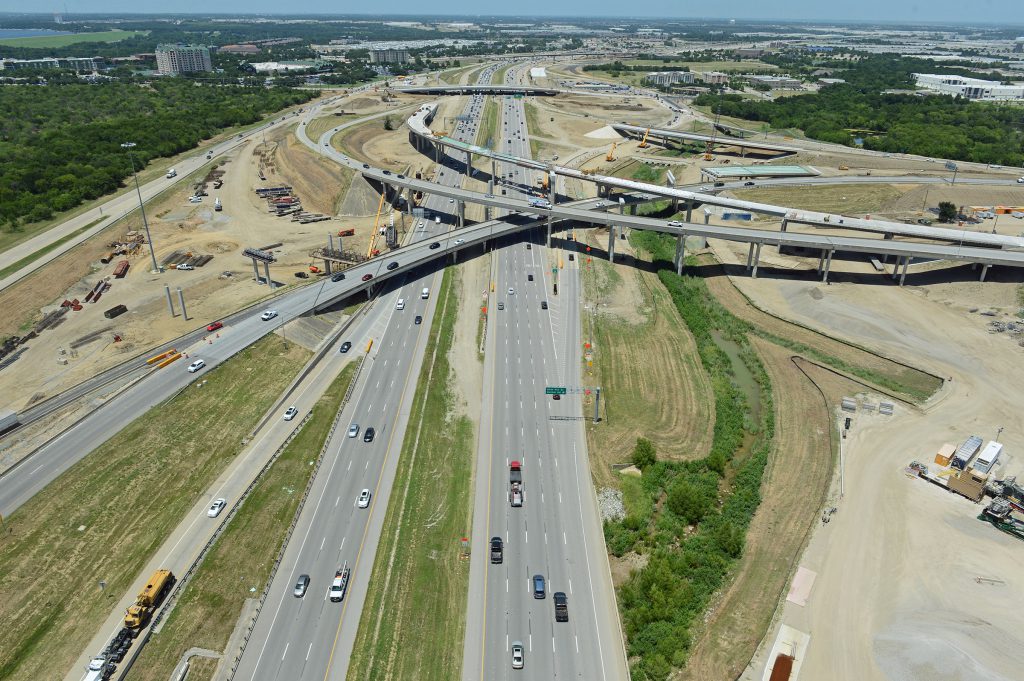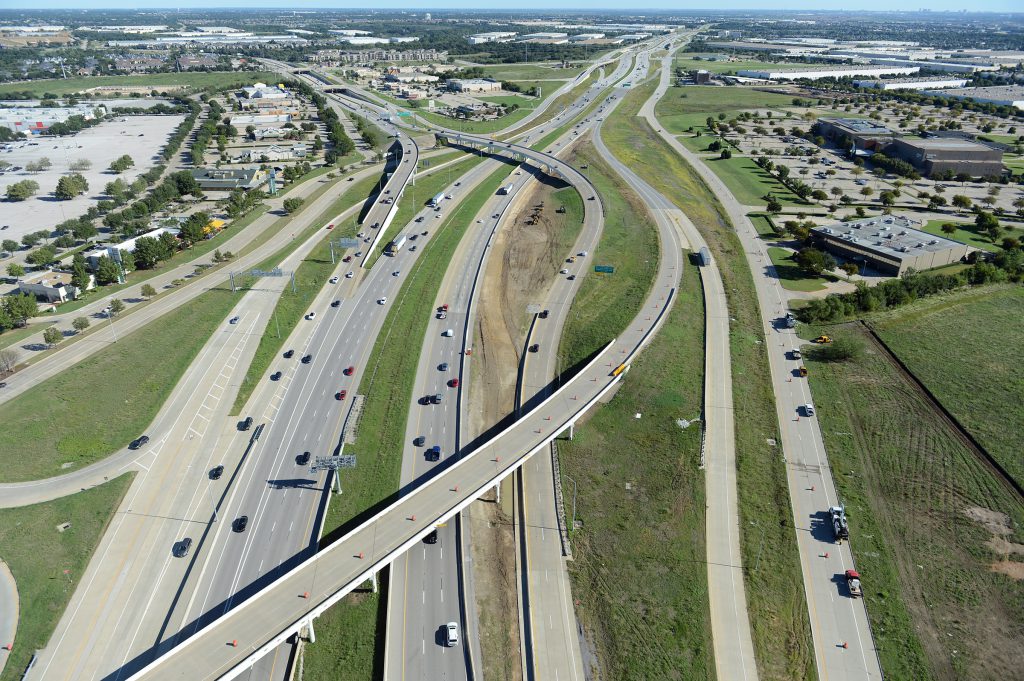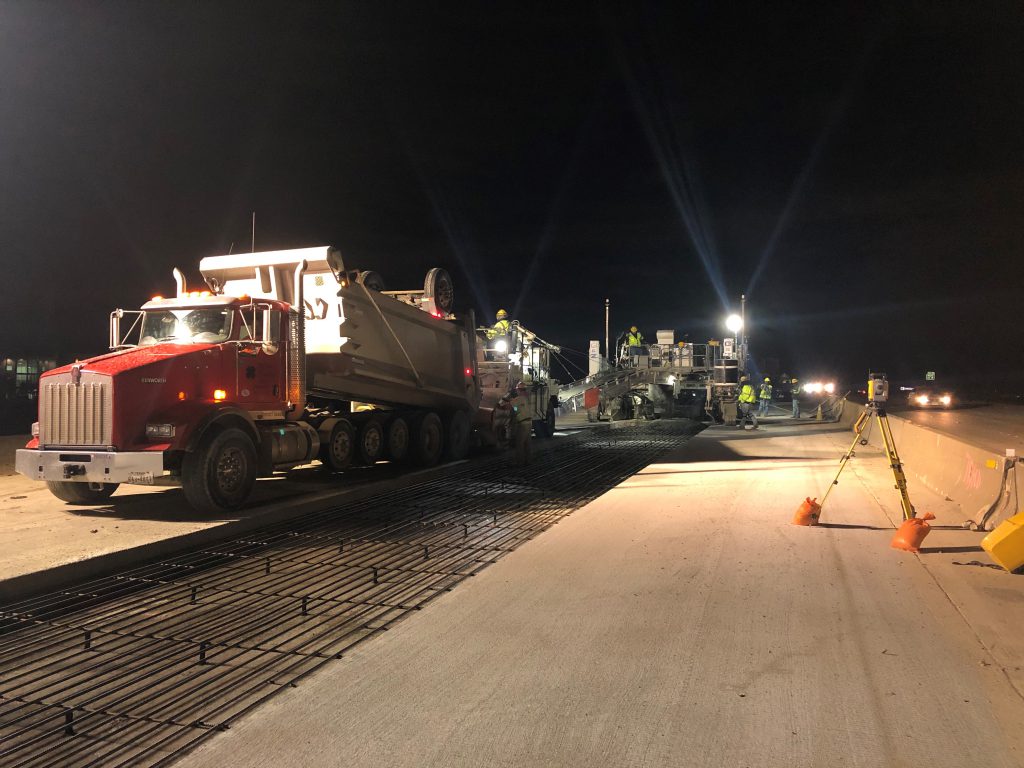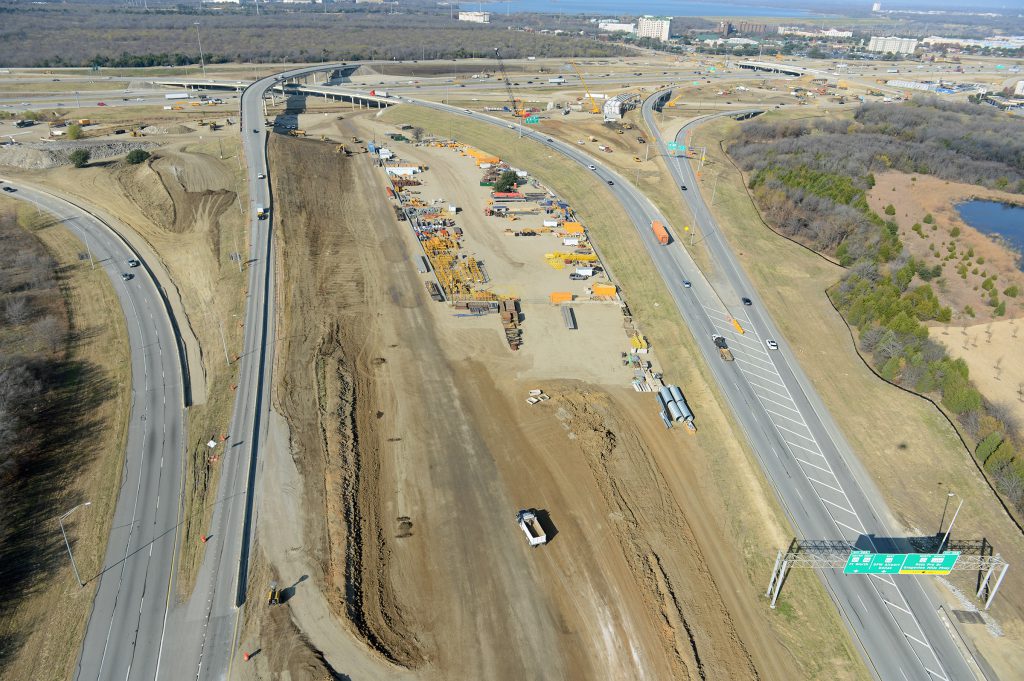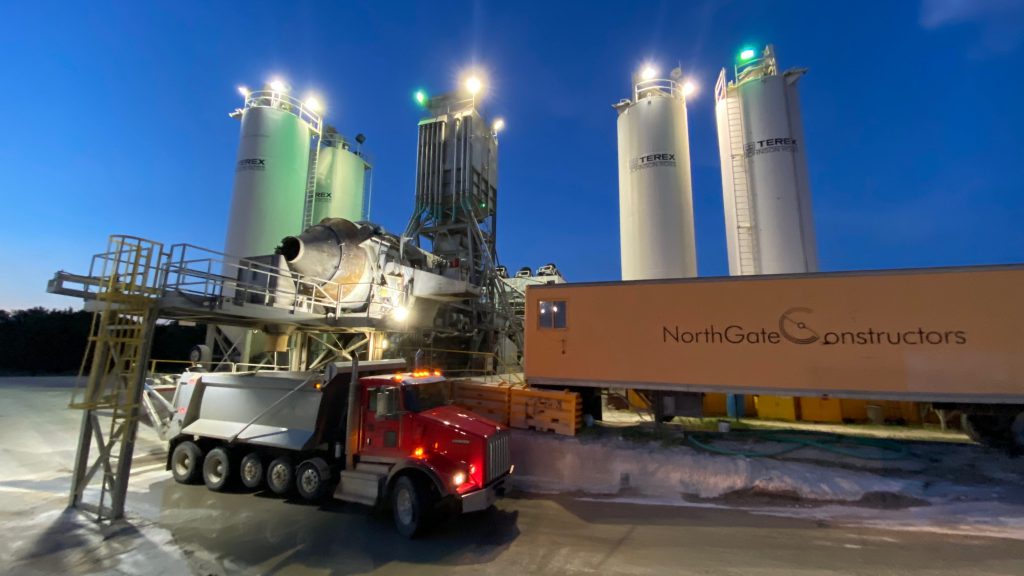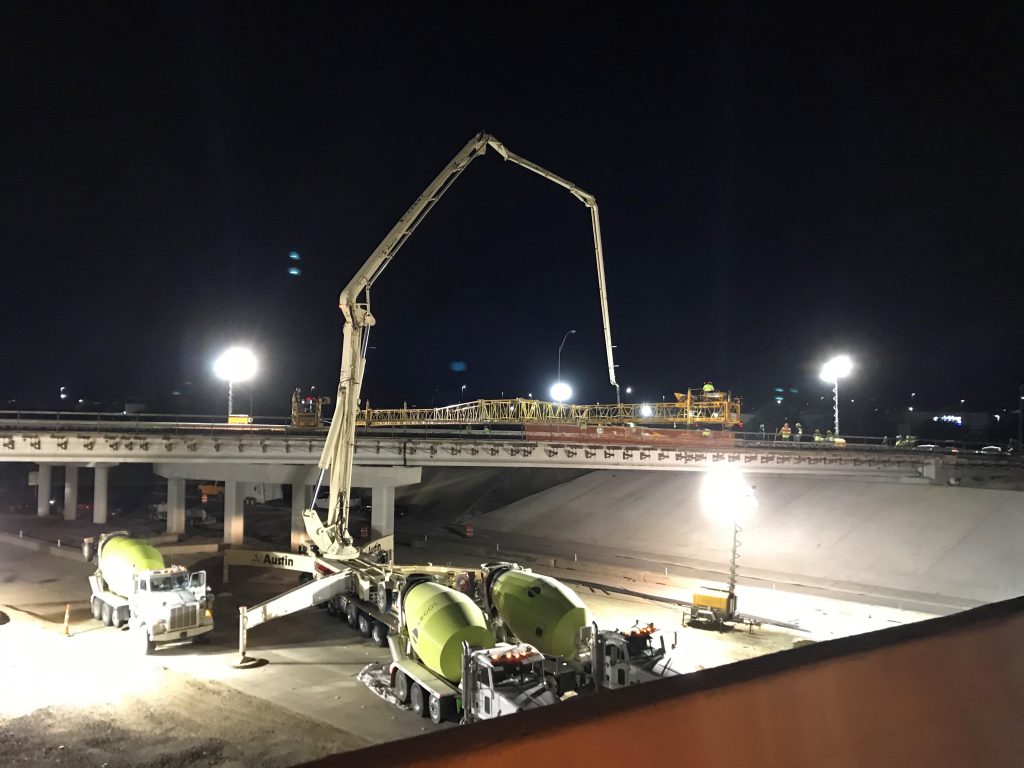One project, four change orders and more than 10 years later, the last link in the DFW Connector project is finally complete, transforming a major thoroughfare for drivers in the Dallas-Fort Worth Metroplex.
This summer, travelers heading to catch a flight from Dallas Fort Worth International Airport are cheering because of a quicker, safer drive.
They aren’t the only ones celebrating. So are members of NorthGate Constructors, a joint venture between Kiewit and Zachry Construction, along with the Texas Department of Transportation (TxDOT).
The improvements made to the Interstate 635/State Highway 121 interchange, located north of the airport in the suburb of Grapevine, are the last link in completing the $1.5 billion DFW Connector project.
Begun back in 2009 as the first design-build for TxDOT in north Texas, nearly 12 years later the original contract has had four change orders overseen by NorthGate.
The most recent is the Connect 4 I-635/SH 121 project, a $383 million job that began in 2018. It’s now substantially complete and open to traffic, six months ahead of TxDOT’s original deadline.
Relief for roadway frustrations
Named for the four interchanges being rebuilt as part of the project, Connect 4 offers some welcome relief from traffic congestion and commuter frustration in this part of the heavily trafficked metro.
One of the most congested bottlenecks on the way to DFW Airport, this 1.6-mile stretch funneled cars on I-635 and Highways 2499 and 121 onto one narrow mainline bridge. That required drivers to make quick lane changes to reach their exit ramps.
“The old interchange had a lot of weaving that caused slowdowns, depending on whether you were going south to the airport or east to Dallas,” said Steve Cochran, project director for NorthGate Constructors.
“The Bass Pro Overpass over Highway 121 was the chokepoint of the corridor,” he said. Too narrow to build any width underneath, a key part of the job was building a new bridge wide enough to add collectors and distributors underneath.
Commuters now have additional lanes for smoother entrances and exits. In addition to the I-635/SH 121 work, the project includes improvements to the Highway 121/FM 2499 interchange.
Longevity and loyalty
Serving the DFW Connector project for more than a decade is a point of pride for the team. Project Sponsor Tom Grim, who started as a project engineer in May 2009, attributes that longevity — as well as staying ahead of schedule — to several factors.
“We’ve had outstanding owner relations from Day 1. It’s been about working hand in hand with the owner and making the decisions on what’s best for the project,” he said.
Sustaining the high bar set by the main job was an important goal.
“We’ve tried to keep that standard or even improve on it, always being willing to have an open mind about doing what’s right for the job and maintaining that excellence throughout the life of the job.”
Grim and Cochran also emphasized the importance of the project being a training ground for many staff and craft. Over 20 Kiewit staff who worked on the DFW Connector are now sponsors, area managers or in higher positions in the company.
They’re especially proud of the craft workforce. “We have folks that started on this project who decided to stay with Kiewit and travel to other projects in the region because of the experience they got working for us on the Connector,” Cochran said.
“Some just really top-notch craft have been with us off and on for 10 years as we’ve gone through this cycle of many jobs,” Grim said.
“Some that started on the job as excavator operators are superintendents,” he added. “And we have some guys that started out as laborers 10 years ago and now are foremen.”
Keeping stakeholders in the know
Working with stakeholders to maintain traffic flow and keep the public up to date on construction was an essential part of the job.
“We had multiple ways to make sure the public stayed informed about the work we had going on,” said Maria Woodrow, NorthGate public information officer. “The resources include email, a website, text alerts, weekly e-alerts, Facebook and Twitter.”
Specific messaging was crafted for businesses impacted by the construction and for the traveling community needing to plan for alternate routes, she said.
“We gave 48 hours’ notice for all lane closures, including full highway closures and traffic switches that were in place less than 24 hours. For all lane closures and traffic switches in place for more than 24 hours, we gave a 14-day notice.”
Affected businesses received notifications with weekend closures, timeframes and detours at least two weeks in advance, with follow-up emails as reminders or updates if anything changed.
A true success story
As the team prepares to wrap up the final details of the project this year, Grim said the collaboration with every stakeholder — from TxDOT and the city of Grapevine to the DFW airport — demonstrated that big jobs can be success stories.
“There’s a lot a stigma with these mega jobs, just gnarling traffic up for four or five years. But this team showed other communities that you can have a design-build mega job and still make it through successfully.”
TxDOT Public Information Officer Michael Peters recently lauded Kiewit and NorthGate’s ability to think outside the box and make adjustments as needed to keep the project moving forward.
“Our region’s continued growth, combined with TxDOT’s focus on enhanced mobility and creating connections, makes the timelines of this project’s completion especially significant,” he said. “NorthGate’s open, continuous communication and their flexibility provided the foundation for a strong partnership.”
